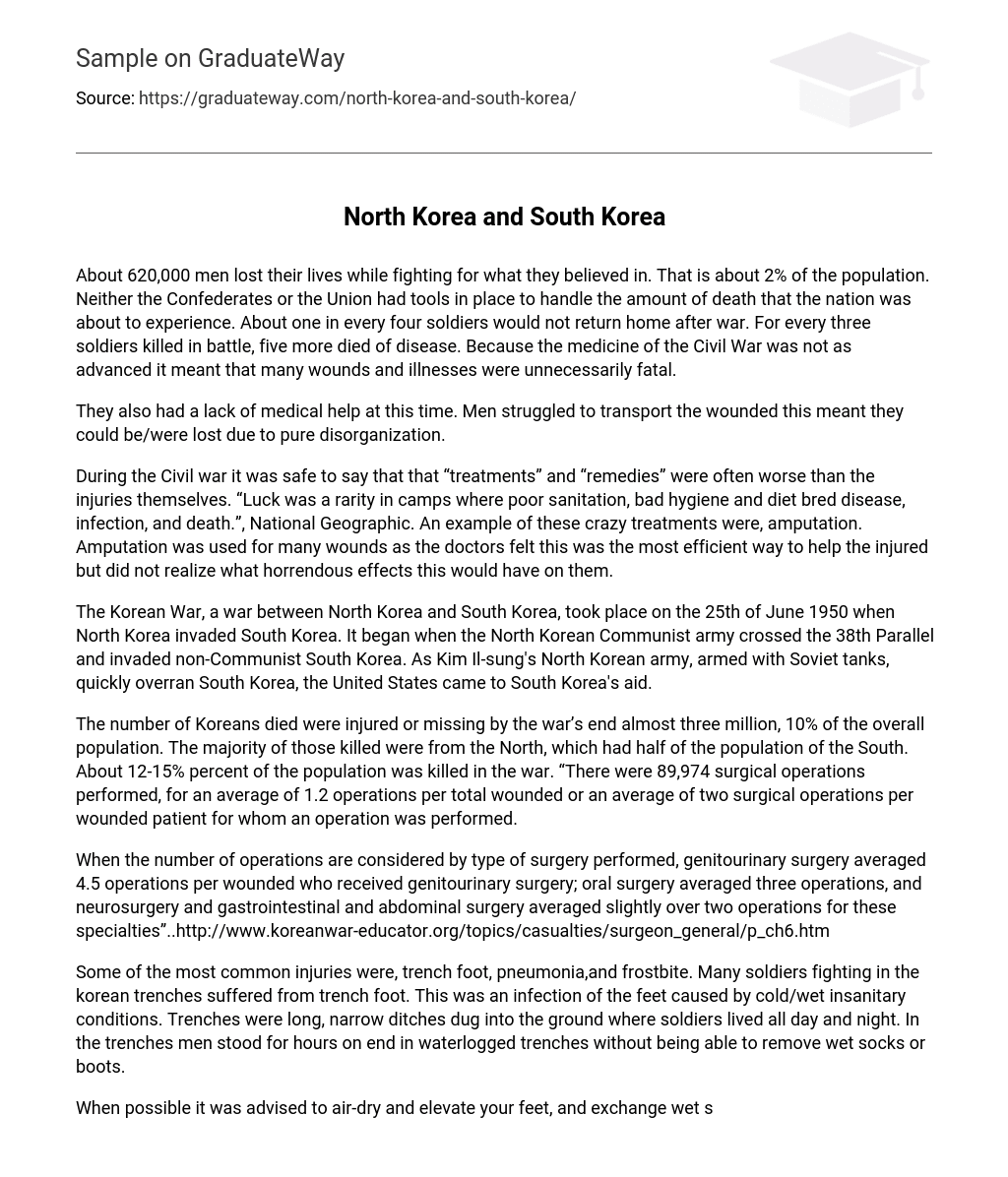About 620,000 men lost their lives while fighting for what they believed in. That is about 2% of the population. Neither the Confederates or the Union had tools in place to handle the amount of death that the nation was about to experience. About one in every four soldiers would not return home after war. For every three soldiers killed in battle, five more died of disease. Because the medicine of the Civil War was not as advanced it meant that many wounds and illnesses were unnecessarily fatal.
They also had a lack of medical help at this time. Men struggled to transport the wounded this meant they could be/were lost due to pure disorganization.
During the Civil war it was safe to say that that “treatments” and “remedies” were often worse than the injuries themselves. “Luck was a rarity in camps where poor sanitation, bad hygiene and diet bred disease, infection, and death.”, National Geographic. An example of these crazy treatments were, amputation. Amputation was used for many wounds as the doctors felt this was the most efficient way to help the injured but did not realize what horrendous effects this would have on them.
The Korean War, a war between North Korea and South Korea, took place on the 25th of June 1950 when North Korea invaded South Korea. It began when the North Korean Communist army crossed the 38th Parallel and invaded non-Communist South Korea. As Kim Il-sung’s North Korean army, armed with Soviet tanks, quickly overran South Korea, the United States came to South Korea’s aid.
The number of Koreans died were injured or missing by the war’s end almost three million, 10% of the overall population. The majority of those killed were from the North, which had half of the population of the South. About 12-15% percent of the population was killed in the war. “There were 89,974 surgical operations performed, for an average of 1.2 operations per total wounded or an average of two surgical operations per wounded patient for whom an operation was performed.
When the number of operations are considered by type of surgery performed, genitourinary surgery averaged 4.5 operations per wounded who received genitourinary surgery; oral surgery averaged three operations, and neurosurgery and gastrointestinal and abdominal surgery averaged slightly over two operations for these specialties”..http://www.koreanwar-educator.org/topics/casualties/surgeon_general/p_ch6.htm
Some of the most common injuries were, trench foot, pneumonia,and frostbite. Many soldiers fighting in the korean trenches suffered from trench foot. This was an infection of the feet caused by cold/wet insanitary conditions. Trenches were long, narrow ditches dug into the ground where soldiers lived all day and night. In the trenches men stood for hours on end in waterlogged trenches without being able to remove wet socks or boots.
When possible it was advised to air-dry and elevate your feet, and exchange wet shoes and socks for dry ones to help prevent it from getting worse trench foot. As well as trench foot, trenches also made it possible for soldiers to get lice and trench fever. Trenches were dirty, smelly and filled with diseases. For soldiers life in the trenches meant living in fear of diseases and of course, the constant fear of enemy attack.





